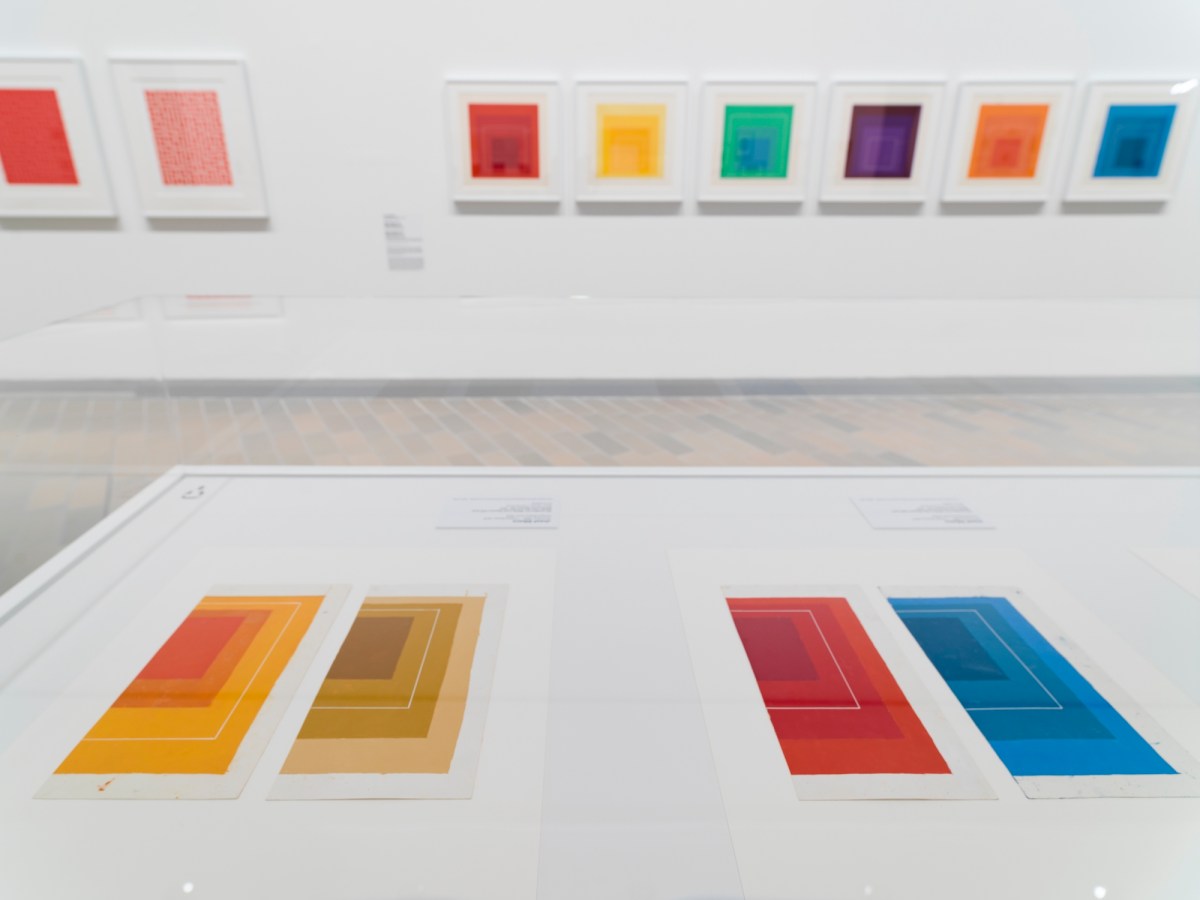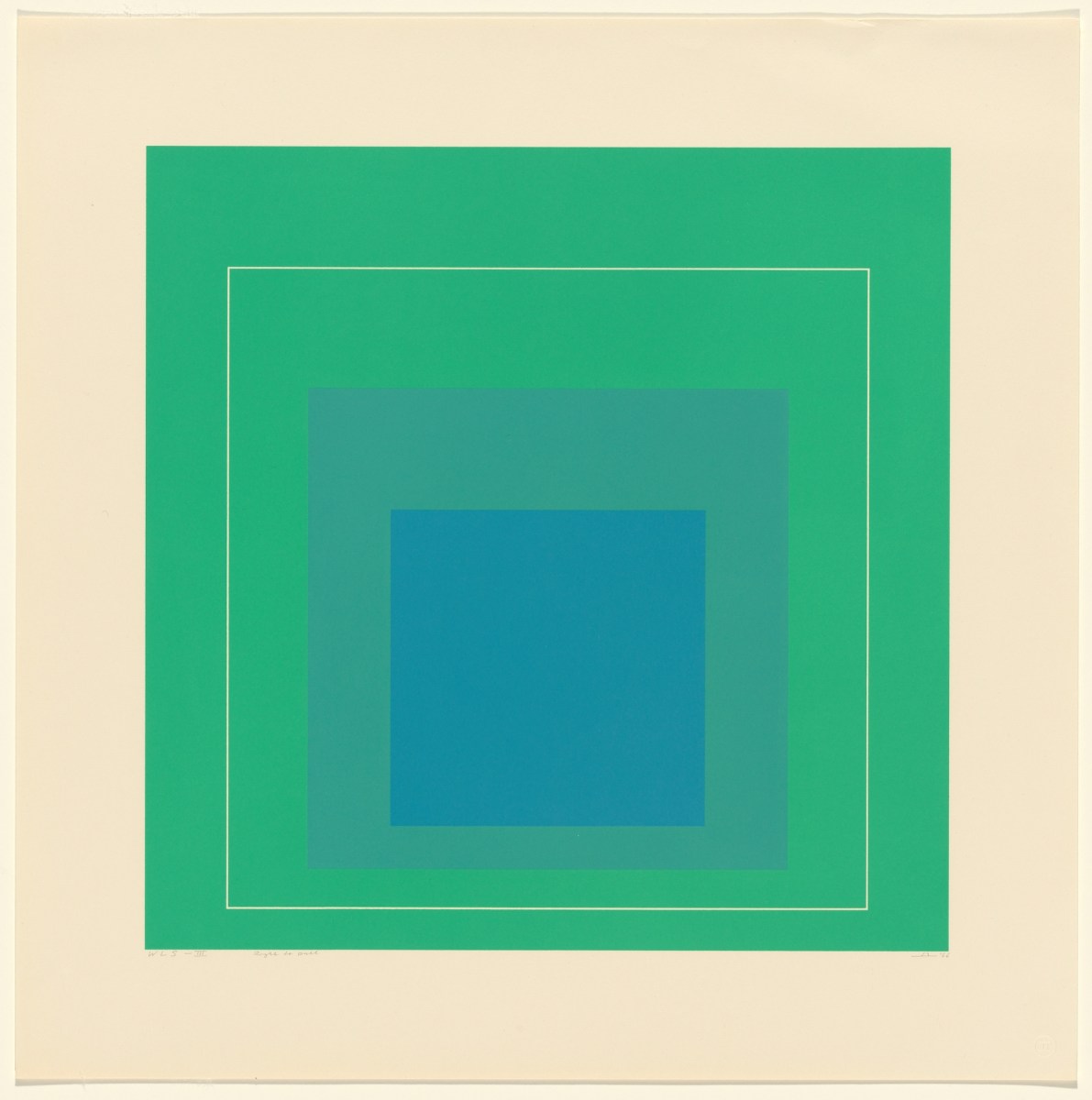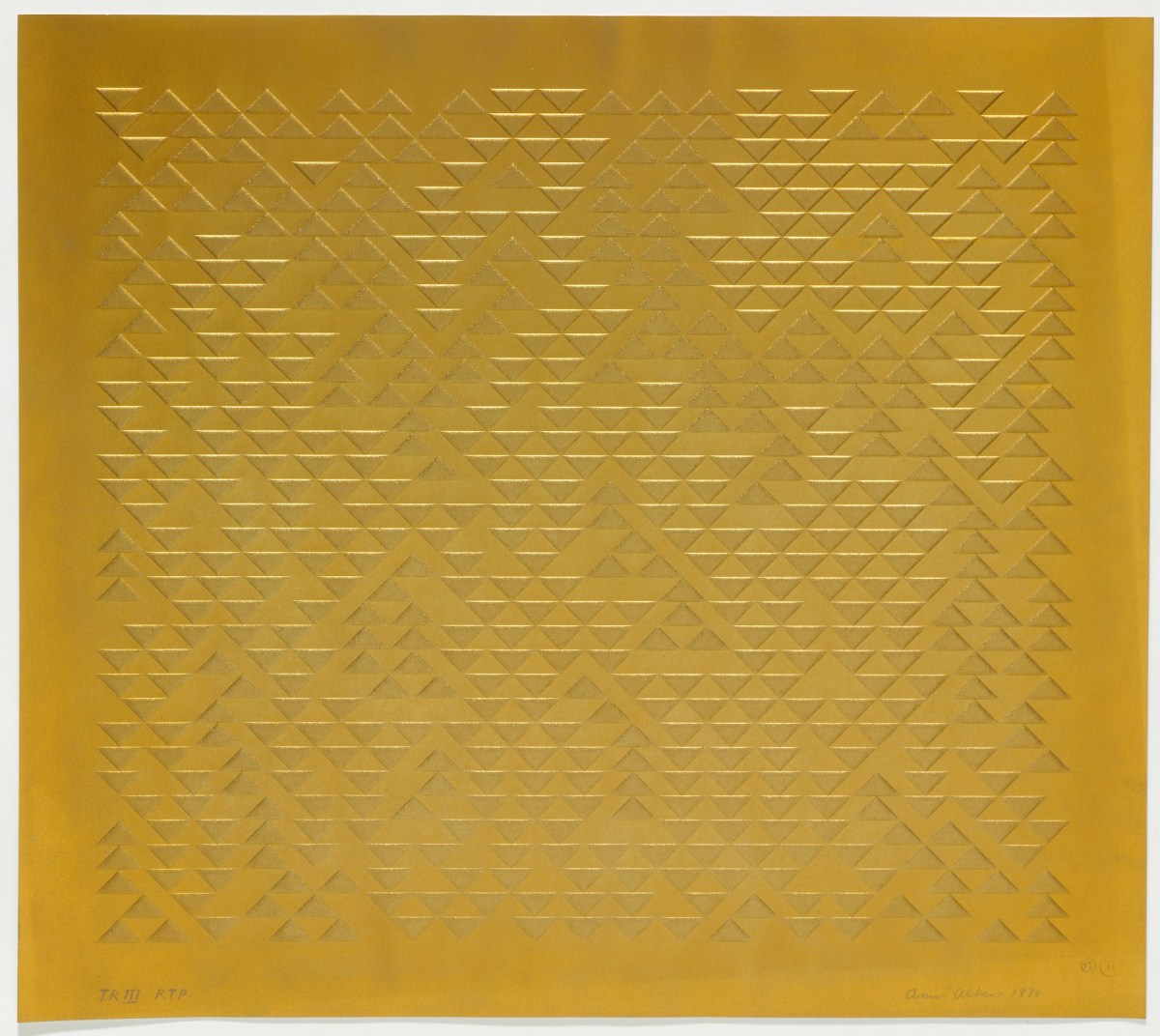In many ways this is an unassuming exhibition, tucked beautifully into the folds of the Brutalist architecture of the National Gallery of Australia (NGA). Neither demands or dominates the other, and yet there is a synergy in their minimalism.
The exhibition Anni and Josef Albers draws from the NGA’s Kenneth E Tyler Collection and has been curated by National Gallery Kenneth E Tyler Curator, International Prints and Drawings, Imogen Dixon-Smith.
But it is far more than a print show. Indeed, it is the first exhibition in Australia to take a deeper look at this legendary pair.
To put it simply, these immigrants changed US art history. Josef Albers became the first living artist to be granted a retrospective exhibition at the Metropolitan Museum of Art in New York in 1971, while, in 1949, Anni Albers had been the first woman and textile artist to be granted a solo exhibition at New York’s Museum of Modern Art.
The Albers left Germany when the Nazis closed the Bauhaus in 1933, where they had both been teaching. The exhibition first looks at the influence of the Bauhaus upon the couple, and then their influence on the Bauhaus movement globally – including Australia, and the likes of architect Harry Seidler.
To make sense of this, Dixon-Smith maps this journey through the foundation of relationships, which were formed upon a shared drive for experimentation and the modern, be they Peruvian textiles, which fascinated Anni, or a shared obsessive precision between Josef and master printmaker and philanthropist, Ken Tyler.
In some ways, the exhibition points less to their own relationship (they met at the Bauhaus school in 1922), and more to those they had with other creatives – such as Ludwig Hirschfeld-Mack, Paul Klee, Gunta Stölzl, Lotte Stam-Beese and, of course, Tyler.
Despite this power couple’s reach, the exhibition has a light touch. A mix of works scatter the walls and a flotilla of museum cases fill the belly of the exhibition. In keeping with the Albers’ aesthetic it has a minimal quality.

Among the highlights are screenprints of Josef Albers’ Homage to the Square series, along with a painting from 1964, which was key to series that lasted several decades. Tyler had approached Albers in 1963 to work with him. He responded with the near impossible challenge to recreate this painting series. While the technology of the day didn’t allow this, Tyler found a way of delivering the perfection of print Albers demanded.
It is complemented by his White line Square series (1966), identified by a perfect fine white line demarcating subtle colour shifts in the print and created by leaving the white paper exposed without any bleeding of the inks, or overlapping colours.

A delight in this show are “offcuts” – colour samples that Albers would paint by hand and post to Tyler to match for the printing process for these works.
Anni’s works have their own precision. She drew inspiration from the Andean weavings of ancient Peru, and regular trips to Mexico. Pieces have been drawn from the NGA’s collection to expand this conversation. She is best known for her text On weaving (1965).
She first collaborated with Tyler in 1970, using a basic triangle motif in repetition. Some of these are embossed white-on-white – such as the series Mountainous in the exhibition – which have a woven textile quality.

And, absolutely stunning in the exhibition is a selection of three works from Anni’s Meander series, which are printed in the same hue and using the same screen, but at different opacity and rotations, to give a simple yet complex composition that weaves its way around the picture plane.

What is key here is that the works by Anni Albers were collected contemporaneously with their making – well before the “know my name” movement – and testament to the institutions’ collecting focus.
Read: Exhibition review: Michelle Hamer: I’m a Believer, Linden New Art
Overall, this is an elegant and succinct show. It may be overshadowed by other happenings in the Gallery (which is often the case with print exhibitions), but it is worth a moment to pause and take in the nuances of these works and their capacity to sharpen our eye.
Anni and Josef Albers
National Gallery of Australia
Kamberri/Canberra
8 June to 22 September 2024
Free.





